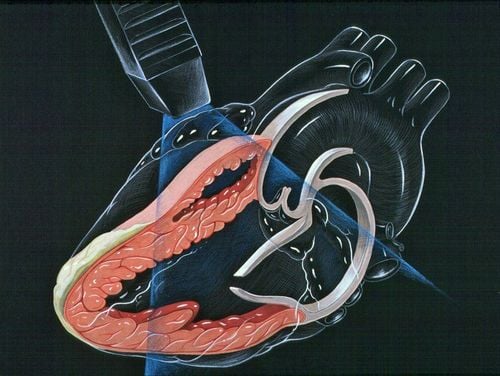This is an automatically translated article.
The article was professionally consulted by Doctor II Nguyen Quoc Viet - Department of Medical Examination & Internal Medicine - Vinmec Danang International General HospitalAtrial septal defect is a common congenital heart disease that, if left untreated, will worsen the clinical condition. Although current interventions to close the hole have a very high success rate, there is still a potential risk of complications.
1. Current methods of closing secondary atrial septal defect
Secondary atrial septal defect is a very common congenital heart disease. Currently, many methods have been applied that have the ability to completely correct this disability, especially when treated early.Previously, the basic method of treating atrial septal defect was surgery. This method has a very high success rate. Until now, cardiac surgeons have been able to operate on pediatric patients as young as a few months old and with many other complex forms of congenital heart disease.
In recent years, along with the advances of science and technology, besides the above-mentioned surgical measures, there have been many other means that also help accurately diagnose and treat congenital heart diseases in general. , atrial septal defect in particular. In particular, it is necessary to mention the endovascular - percutaneous intervention method, which helps the intervention to be carried out thoroughly without the need for open chest surgery. This is also really the most preferred method by patients and parents.
However, compared with the gold standard of surgical closure of atrial septal defect, endovascular intervention also has certain limitations. On the other hand, the surgery is heavily invasive, which is the worry of parents about the health of their children. However, with each method, there are certain advantages and disadvantages; At the same time, complications cannot be completely avoided after the intervention. The selection depends on the actual injury, the child's condition and the ability and medical qualifications on the spot
2. Complications after surgical closure of atrial septal defect

A Dutch study, after surgical closure of a secondary atrial septal defect in 135 patients. There was not a single death from cardiovascular disease, stroke, heart failure or pulmonary hypertension. However, symptomatic ventricular tachycardia occurred in 6% of patients after 15 years and 5% of them required pacemaker implantation. Therefore, arrhythmias appear to be the main long-term complication after surgical closure of the atrial septal defect.
Early postoperative complications include wound infection, pericardial effusion causing acute tamponade, and occasional need for repeat surgery. This is no different from other heart surgeries.
3. Complications after closure of atrial septal defect secondary to endovascular intervention
Interventional endovascular occlusion of the atrial septal defect has made great strides. In particular, although the effectiveness of secondary atrial septal defect closure has not been studied as much as the closure of the ductus arteriosus, the role of this method cannot be denied even though there are still some complications after the procedure. art.3.1. Procedure-related complications
Most medical centers around the world perform this procedure under general anesthesia. However, for adult patients, the intervention can be performed under general anesthesia or only under local anesthesia. Especially when there is the introduction of transcardiac echocardiography with good image quality, reducing the need for transesophageal echocardiography also helps to limit significant complications.
However, in percutaneous endovascular intervention, the use of contrast agents carries the same risks as any other interventional cardiac catheterization procedure. Specifically, the risk of contrast reaction, perforation or perforation of the heart, and infection.
However, complications during intervention can still be prevented by carefully considering indications, assessing the size of the lesion, and choosing the correct size of the device. In addition, the means, equipment and techniques must always be sterile, considering the use of prophylactic antibiotics. In addition, it is necessary to pay attention to antiplatelet therapy to prevent complications of thrombosis in the first days immediately after the intervention.
3.2. Intermediate and long-term complications after intervention
The most worrying complication is the risk of cardiac erosion due to the device used to occlude the atrial septal defect. Some reports suggest that erosion carries a risk of progressive pericardial effusion or even acute cardiac tamponade. Collected data showed that all erosions occurred near the base of the aorta, particularly when oversized instruments were inserted into the cardiac chambers.
In summary, although the level and experience of interventional cardiologists have been increasingly improved, complications after closure of atrial septal defect are still difficult to reduce to an absolute level. However, the benefits after closing are undeniable. Accordingly, there should be careful considerations when choosing intervention methods as well as vigilance to detect possible complications early, thereby taking timely remedial measures, minimizing risks. serious later.

Please dial HOTLINE for more information or register for an appointment HERE. Download MyVinmec app to make appointments faster and to manage your bookings easily.
Reference source: mayoclinic.org













